I am trying to find a relationship between two variables (pv_ratio, battery_ratio) and a third variable 'value'. Both ratios range from 0 to 5 with points every 0.0625 (81x81=6561 points) and 'value' falls within [0,1].
The csv can be found here and looks like that:
battery_ratio pv_ratio value
0 0.0000 0 1
1 0.0625 0 1
2 0.1250 0 1
3 0.1875 0 1
4 0.2500 0 1
5 0.3125 0 1
6 0.3750 0 1
7 0.4375 0 1
8 0.5000 0 1
9 0.5625 0 1
These plots give an idea of the relationships between my variables:
Here is my code to fit my curve, using sicpy.optimize.curve_fit and looking for exponential relationships. This code snippet reads the csv into a pandas df, finds optimal parameters for the f function, plots the results and gives a score to the fit.
I've been working in an iterative manner, trying many formulas for f, improving the score little by little.
from scipy.optimize import curve_fit
import pandas as pd
import numpy as np
import matplotlib.pylab as plt
%matplotlib inline
plt.rcParams['figure.figsize'] = (14.0, 8.0)
def f(X, a, b, c, d, e):
# the function I came up with after some trials, and which I'm trying to improve
bt_r = X[:,0] #battery_ratio
pv_r = X[:,1] #pv_ratio
return (1 - a * np.exp(- e * pv_r ** b)) * np.exp(- (d ** bt_r) * c * pv_r)
def fit():
#find optimal parameters and score fit
X = df[variables].values
y = df.value.values
popt, pcov = curve_fit(f, X, y)
y_real, y_fit = df['value'], f(df[variables].values, *popt)
score = np.round(np.sum(((y_fit - y_real)**2)),1)
return popt, score
def check_fit(values):
#Plot (y_fit, y) for all subsets
def plot_subset(ax, variable, r_value):
"""Scatter plot (y_fit and y) against 'variable' with the other variable set at ratio
- variable : string ['pv_ratio', 'battery_ratio']
- r_value : float
"""
# ratio stands for the second variable which is fixed
ratio = list(set(variables) - set([variable]))[0]
df_ = df.query("{} == {}".format(ratio, r_value))
# plot y and y fit
y_real, y_fit = df_['value'], f(df_[variables].values, *popt)
for y, c in zip([y_real, y_fit], ['b', 'r']):
ax.scatter(df_[variable], y, color=c, s=10, alpha=0.95)
ax.set_title('{} = {}'.format(ratio, r_value))
fig, ax = plt.subplots(nrows=2, ncols=len(values), sharex=True, sharey=True)
for icol, r_value in enumerate(values):
plot_subset(ax[0, icol], 'pv_ratio', r_value)
plot_subset(ax[1, icol], 'battery_ratio', r_value)
fig.tight_layout()
print 'Score: {}'.format(score)
df = pd.read_csv('data.csv', index_col=0)
variables = ['battery_ratio', 'pv_ratio']
popt, score = fit()
check_fit([0,3,5]) #plot y_real and y_fit for these ratios
The code above yields the following picture (blue: real, red: fit) and gives a score to the fit.
The best score (=sum((y_real - y_fit)²/len(y))) I can get is 9.3e-4, which is still not very good in practice, especially on the ramp-up phase.
I'm now stuck at a point where the try-and-repeat process shows its limits. How should I work to design faster and more efficiently my fitting function? Can I get a better score than 6.1?


